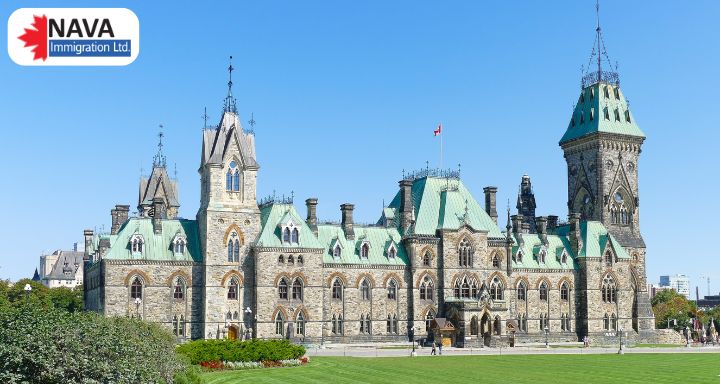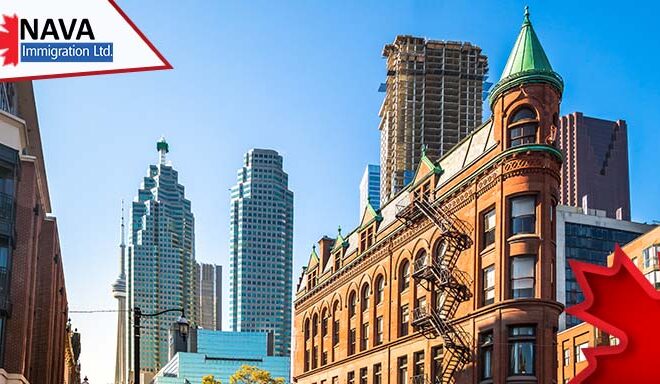Rachel Bendayan Takes Over As Canada’s New Immigration Minister
Rachel Bendayan takes over as Canada’s new Immigration Minister.
Mark Carney, Canada’s new Prime Minister, has announced his cabinet in anticipation of the forthcoming 2025 federal election, shuffling immigration ministers in the procedure.
Rachel Bendayan will now serve as the head of Canada’s immigration department, taking over from previous Immigration Minister Marc Miller.
Cabinet shuffles are a common occurrence in Canadian politics. This allows Prime Ministers the opportunity to reappoint ministers to different government departments or remove them from office entirely.
This might be done for several reasons, including awarding ministers for good performance, addressing poor-performing departments, or better-aligning government policy with public opinion.
The last cabinet shuffle took place in July of 2023, in which immigration ministers switched from Fraser to Marc Miller.
Canada’s New Immigration Minister: Who Is Rachel Bendayan?
Rachel Bendayan takes over as Canada’s new Immigration Minister. Minister Bendayan has held numerous roles in Canadian politics, including serving as the country’s previous Minister of Official Languages.
Moreover, Minister Bendayan previously served as the Parliamentary Secretary to the:
- Minister of Tourism and Associate Minister of Finance
- Minister of Small Businesses, Export Promotion, and International Trade
- Deputy Prime Minister and Minister of Finance
Bendayan was born into a Moroccan-Jewish family and raised in Quebec. She holds a Bachelor of Arts in International Development Studies and a joint Bachelor of Civil Law/ Juris Doctor from McGill University.
With nearly a decade of experience, she established a thriving legal career at Norton Rose Fulbright before entering politics. During her legal career, Bendayan focused on litigation as well as international arbitration, with a specialization in international trade law. Additionally, she has taught at the Université de Montréal’s Faculty of Law.
Immigration Changes Ahead: PM Mark Carney’s Approach
With a transition of administrations, Canada’s immigration policy is now in the hands of a new Prime Minister & Immigration Minister.
Canadian ministers are offered a Mandate Letter from the Prime Minister. The letter details the objectives that each minister should work to achieve, along with the challenges that they will have to address in their role.
Prime Minister Carney’s views on these objectives and challenges for Canada’s Immigration Minister are unclear at this moment. However, previous statements offer some idea of his thinking. Among other policies, Carney has previously advocated for:
- Capping immigration to a ‘sustainable pre-pandemic trend’
- Prioritizing temporary residents of Canada for permanent residence
- Reining in numbers of temporary foreign workers
Marc Miller’s Influence On Canada’s Immigration System
As Rachel Bendayan takes over as Canada’s new Immigration Minister, let us discuss Minister Miller’s impact on Canada’s immigration system.
Well, Marc Miller’s tenure as Immigration Minister of Canada yielded major changes to the nation’s immigration system.
Many of Miller’s policies follow these themes, with the most impactful measures working to curb newcomer inflows to treat domestic housing as well as affordability pressures.
Among other changes in his time as Immigration Minister, Miller:
- Imposed levels on in-flows of new study as well as work permit holders
- Reduced the levels of permanent resident immigration to roughly pre-pandemic numbers
- Instituted a pause on applications for new LMIAS, i.e., Labour Market Impact Assessments in metropolitan areas with an unemployment rate equal to or greater than 6%
- Re-oriented federal economic immigration to an ‘In-Canada’ focus
- Established a cap on new international student enrollment, imposing province-by-province student allocations in the process
- Committed to serious rollbacks of Temporary Foreign Worker Program in Canada
- Made certain changes to Canada’s Express Entry category professions
- Introduced language, along with the field of study requirements for PGWP, i.e., Post-Graduation Work Permit issuances
- Implemented restrictions on the issuance of family Open Work Permits
- Declared the removal of arranged employment points under the CRS, i.e., Comprehensive Ranking System for Express Entry candidates
The Significance Of The Immigration Portfolio
Immigration is a key issue in Canadian society, with the inflow of newcomers/ immigrants serving crucially to bolster Canada’s labor market as well as demography. In his time as minister of immigration, Marc Miller often noted the major role that immigration played in Canadian society, allowing the nation to avoid a recession in 2023.
The immigration file is such a key focal point in Canadian politics that former Prime Minister Justin Trudeau led the declaration of the 2025-2027 Immigration Levels Plan himself.
The significance of the immigration portfolio is further evidenced by the prominent role many immigration ministers play even after their time heading IRCC.
Sean Fraser, the immigration minister who preceded Marc Miller, has gone on to become Canada’s Minister of Housing Infrastructure and Communities – a pivotal role given the current asymmetry between housing stock and housing demand in the country, along with the associated negative effects on affordability.
The immigration minister preceding Fraser, Marc Mendicino, has similarly continued to hold prominent positions in Canadian politics, serving as the nation’s Minister of Public Safety until 2023. Mendocino presently serves as Canada’s 16th Chief of Staff-designate under Mark Carney.
In addition to its heightened importance, regulations around immigration in Canada are such that the nation’s immigration department wields a level of control as well as leeway around its operations that many other governmental departments do not enjoy.
This is evidenced, for instance, by the sweeping public policies IRCC can enact to meet its governmental mandate.
One example of a previously enacted public policy was the temporary policy to lift work hour caps for international students in Canada during regular school semesters.
Under this COVID-era policy, students could work an unlimited number of hours off-campus while attending classes during regular school semesters. This temporary policy was a major change from the previous limit of only 20 off-campus work hours per week. Presently, international students might only work 24 hours a week off-campus during regular school semesters.
If you seek information on how to begin your Canada immigration application process, you can talk to our NavaImmigration experts at 1800-918-8490. You can also drop us an email at [email protected].





